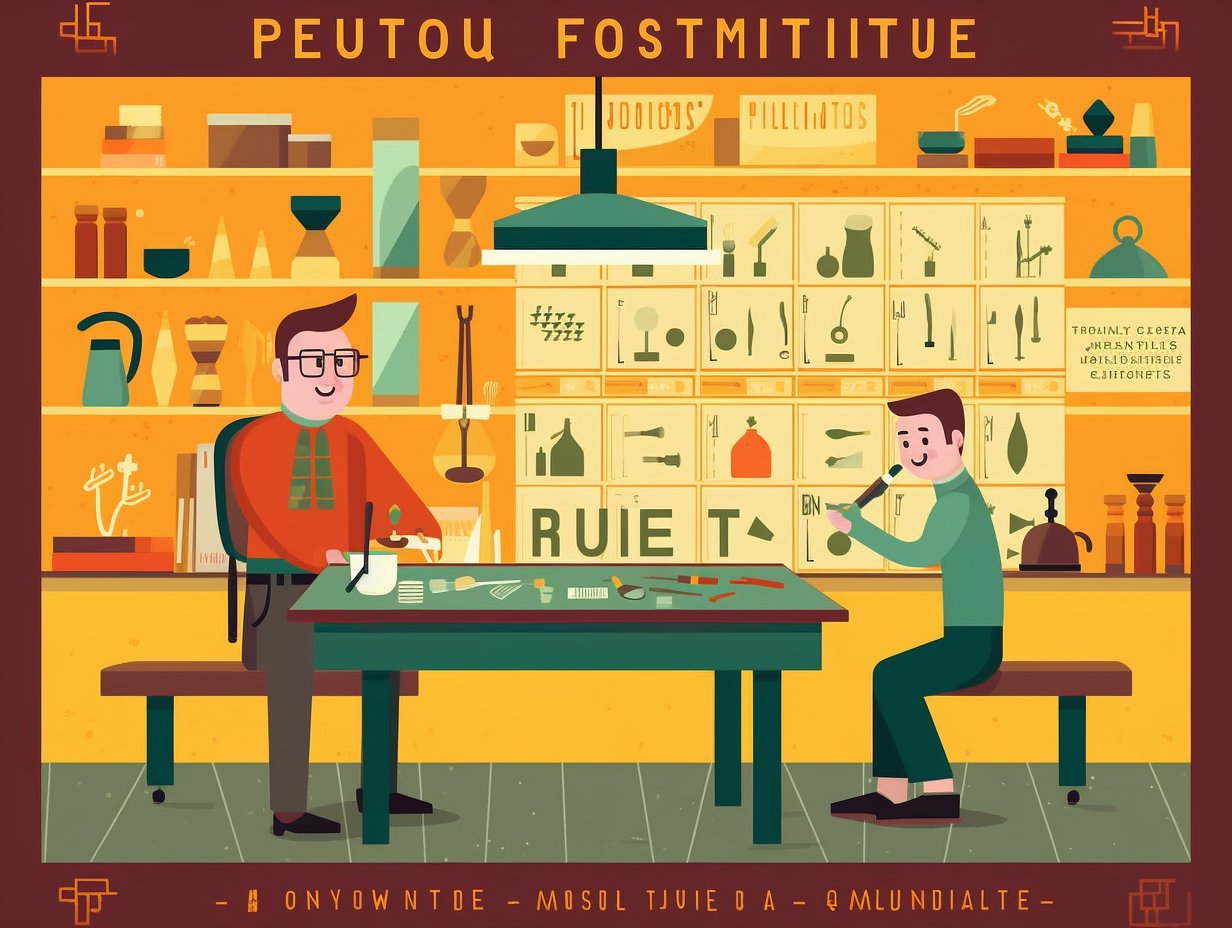Discover the Unexpected: Top 15 Entertaining and Unusual Facts About the Periodic Table

1. Noble Gases with Restraint
Those noble gases must have some serious restraint training: they're virtually unreactive on the periodic table because their outer electron shells are already full! Take helium, for example, the ultimate party-crasher in our balloon-filled shindigs – despite its popularity, it barely reacts with other elements, only forming weak bonds with certain compounds under specific conditions. Now that's some gas with class!
Source => study.com
2. Organized Elemental LEGO Set
Behold the master blueprint of nature's finest LEGO set: The periodic table lines up its 118 elements not as randomly assorted building blocks, but according to their electron configurations, creating identifiable patterns such as similar chemical characteristics within a group and increasing non-metallic characters traversing from left to right, and from bottom to top! Yes, dear reader, even in the elemental world, organization is key.
Source => en.wikipedia.org

Did you know bananas contain a radioactive isotope? Discover why eating thousands of them still won't harm you! 🍌☢️
=> Fun Facts about Chemistry
3. Sherlock's Literary Genius
Elementary, my dear Watson, isn't just applicable to cracking cases, but also to appreciating the literary genius behind them: Sir Arthur Conan Doyle meticulously crafted his Sherlock Holmes stories with foreshadowing and intricate plotlines, ensuring their timeless appeal and enduring admiration.
Source => litpriest.com
4. Synthetic Party Crashers
In an Earth-shattering revelation that left Mendeleev's ghost absolutely shook, we discovered that the periodic table has some undercover guests crashing the party: elements 93 to 118, synthetic stars that live fast and leave a radioactive legacy! These transuranic trendsetters have scientists scrambling to keep up, inventing fusion and neutron bombardment just to get their autographs: and herein lies the fact, that the first 92 elements occur naturally while 93 to 118 are synthetic, with the star of the show, Oganesson (Og), dazzling us with a half-life of 0.89 milliseconds before vanishing into atomic oblivion.
Source => angelo.edu

5. Hydrogen: The Energy Heavyweight
Step aside, gasoline, there's a new energy heavyweight in town: Hydrogen, which not only boasts a whopping energy content three times your puny power but is also an extraterrestrial jetsetter, fueling rockets and spacecraft fuel cells on their cosmic adventures. All jokes aside: Hydrogen holds the title for having the highest energy content by weight of any common fuel and is already being used in space, while its abundance in the universe and production potential make it a promising resource for the future.
Source => eia.gov
6. Electrifying Metal Dance Floor
If metals had a party, their dance floor would be electrifying - literally: This is because their unique metallic bonding allows for free-flowing valence electrons, making them fantastic conductors of electricity and setting them apart from nonmetals and metalloids.
Source => angelo.edu
7. Periodic Table: Map to Elemental Realms
Like a mystical map leading explorers to lands unseen, the periodic table tickles the fancy of chemists searching for elements as elusive as yeti footprints in the snow: The periodic table not only organizes known elements, but also hints at undiscovered ones, like ytterbium, thulium, and erbium – all members of the Lanthanide metals – helping us venture deeper into the elemental realms of our universe.
Source => breakingatom.com
8. Uranium: The Mac Daddy of Elements
Uranium walks into the periodic table and says, "You got the weight, I got atomic number 92!", as it flexes its hefty biceps: As the Mac Daddy of natural elements, uranium boasts the highest atomic weight, tipping the scales at an impressive 238.03 atomic mass units.
Source => energy.gov
9. Periodic Table: Scientist Walk of Fame
Get your lab coats and safety goggles on, we're about to name-drop some brainy babes and gents: Did you know that the periodic table is like the Hollywood Walk of Fame for scientists? Picture this: Einstein sharing a star with the likes of the Curies and Americium. No autograph needed, just an electron or two: Several elements, such as Einsteinium, Curium, and Americium, pay homage to the brilliant minds or destinations they're named after, making the periodic table not only useful for chemistry enthusiasts but also a testament to the very pillars of scientific discovery.
Source => slideplayer.com

10. Size Matters: Atomic Size Trends
Who said size doesn't matter? Just ask the atoms hanging out in the periodic table's nifty neighborhoods: Atomic size generally increases from top to bottom within a group, leading to more chemical interaction possibilities as that nucleus-to-valence-electron distance expands. But don't expect the same trend from those rebellious transition metals and inner-transition metals chilling out in groups 3-12 and below the periodic table, respectively – they like to keep us guessing!
Source => chem.libretexts.org
11. Gold and Luisa Alexander's Fashion Fusion
Gold, Holy Grail of all things shiny and the not-so-secret ingredient in a Midas Touch: The periodic table boasts 118 elements, including our beloved Au (gold), carrying the atomic number of 79 and living a life of luxury among the elite. And speaking of luxury, Luisa Alexander has struck fashion gold, melding goldstone with traditional gemstone cuts, because even our bling must acknowledge the sovereignty of King Midas.
Source => luisaalexander.com
12. Atoms: The Ultimate Matchmakers
Forget about swiping left or right on dating apps – atoms have been playing the ultimate matchmaker with their electrons! Covalent bonding is the name of their little dance, as they share electrons to achieve a full valence shell and a pretty stable relationship: The strength of this chemical bond depends on the overlap of atomic orbitals and can result in single, double, or triple bonds, which are essential for creating various types of molecules and chemical reactions across the periodic table.
Source => en.wikipedia.org
13. Fluorine: The Regina George of Elements
Move over, Grumpy Cat, there's a new sassy star in town: Fluorine, the Regina George of the periodic table! This yellow-hued drama queen loves attention and is not afraid to react with almost everyone, except for the forever introverted noble gases helium, neon, and argon. No one can deny its electronegative allure, and it's got the versatility to befriend nearly all other elements in the most colorful of bonds.
Source => blog.degruyter.com
14. The Quirky Elemental Family Reunion
Imagine the periodic table as a quirky family reunion: every element has a seat at the table as the cousin who starts fireworks, the aunt who stubbornly refuses to react, and the uncle with so many layers you can't quite put your finger on his personality. The family secret: vertical columns are called groups or families because elements in each group have similar chemical behaviors and electron configurations, like reactive alkali metals in group 1A with one valence electron or unreactive noble gases in group 8A with a full valence shell.
Source => chem.libretexts.org

15. Iron: Earth's Abundant Metal Flex
Feeling a bit rusty? Don't worry, it's just Earth's iron abundance flexing its cosmic biceps: Iron is the fourth most abundant element in Earth's crust, constituting about 80% of its inner and outer cores, thanks to its nuclear stability in stellar nuclear fusion reactions. And while other metals like nickel, cobalt, copper, and manganese could potentially replace iron, they're just not as abundant on our dear planet.
Source => pubmed.ncbi.nlm.nih.gov
Related Fun Facts




















